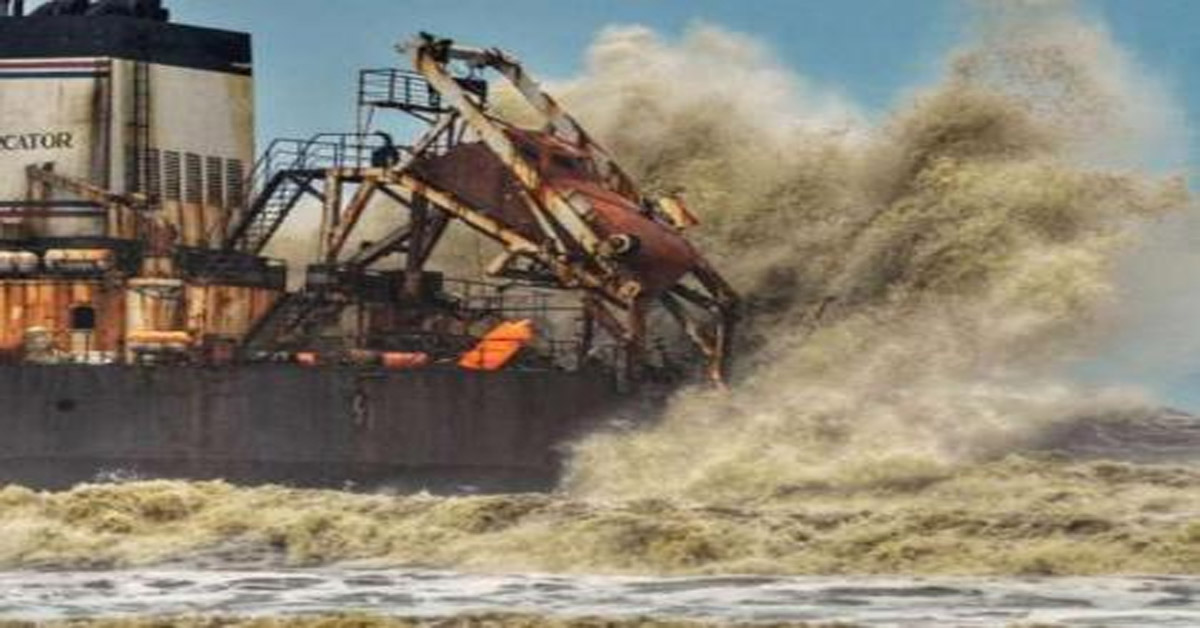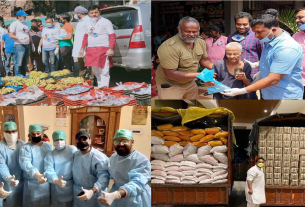When the weather office sent out cyclone warnings on May 13 and most vessels moved to safety, one barge working on Oil and Natural Gas Corp.’s field off the Mumbai coast stayed put.
That decision would prove fatal when Tauktae, a storm with the intensity of a category 3 hurricane, struck on the evening of May 16. It tore apart the Papaa 305’s anchors and slammed it into an offshore platform, taking down 261 people on board. Since May 17, 186 have been rescued, 70 bodies have been retrieved and five people remain missing. The storm left over 100 dead overall across several states.
The oil ministry has ordered an investigation led by a group of senior government officials into the accident, and wants a report within a month. State-run ONGC, the country’s biggest explorer, and its billionaire-owned offshore engineering contractor are under growing pressure to explain their roles in one of the world’s worst offshore oilfield disasters in recent memory.
Interviews with survivors, rescue officials and executives from ONGC suggest that a serious misreading of the weather, as well as human error and safety lapses led to the tragedy.
“It appears there were very serious institutional lapses,” said C Uday Bhaskar, a retired Indian Navy officer and director at the Society for Policy Studies in New Delhi. “International perception about India’s regulations apropos safety at sea — whether that of human beings or offshore platforms or support vessels — is below the median,” he said, seeking an independent probe by professionals.
Confronting Death
It was a busy time in the Arabian Sea on India’s western coast when the cyclone hit the area.
Thousands of welders, painters and engineers had come from all over the country to work on renovating the giant metal structures ONGC used for pulling out oil from the seabed. They lived in the barges hired by Afcons Infrastructure, an engineering company owned by billionaire Pallonji Mistry’s Shapoorji Pallonji Group. Afcons was the main contractor for the jobs of fixing decays and painting rusted pipes and metals in order to protect the structures from the corrosive onslaught of the sea.
The monsoon was closing in for arrival early next month, and the contractors were in a rush to complete as much work as they could on the platforms before leaving the sea for the duration of the season.
As the teams worked, the Indian Meteorological Department on May 11 sent out its first warning of a storm brewing in the area. In response, ONGC officials say the company asked all 7,675 people in its installations and 99 vessels, including barges, boats and rigs, to move to safer locations. The national weather forecaster on May 13 and 14 issued more alerts warning that the cyclone was getting severe, and would cross offshore Mumbai on May 16-17 with wind speeds of as high as 175 kilometers (109 miles) an hour.
As most of the vessels returned to anchorages close to the coast, Papaa 305 anchored very near its original location, some 70 km from the coast. The weather deteriorated rapidly from the evening of May 16 and further worsened the next day, leaving no time for any further action by the barge, according to Afcons.
After the cyclone pushed the barge into a platform and caused it to sink on the evening of May 17, hundreds of the people on board clambered onto life rafts to escape. But almost all the rafts were in damaged condition, leaving them with no option but to jump into the sea, according to three survivors. Battling strong winds and high waves, the surviving crew drifted in their life jackets miles away from the barge.
“It was a 15-hour battle between life and death in the raging sea,” said Agnel V Varkey, a 25-year-old engineer from southern Kerala state who survived the disaster. “I confronted death several times. The waves would sweep me away every time I tried getting closer to the rescue ships.”
When the weather office sent out cyclone warnings on May 13 and most vessels moved to safety, one barge working on Oil and Natural Gas Corp.’s field off the Mumbai coast stayed put.
That decision would prove fatal when Tauktae, a storm with the intensity of a category 3 hurricane, struck on the evening of May 16. It tore apart the Papaa 305’s anchors and slammed it into an offshore platform, taking down 261 people on board. Since May 17, 186 have been rescued, 70 bodies have been retrieved and five people remain missing. The storm left over 100 dead overall across several states.
The oil ministry has ordered an investigation led by a group of senior government officials into the accident, and wants a report within a month. State-run ONGC, the country’s biggest explorer, and its billionaire-owned offshore engineering contractor are under growing pressure to explain their roles in one of the world’s worst offshore oilfield disasters in recent memory.
Interviews with survivors, rescue officials and executives from ONGC suggest that a serious misreading of the weather, as well as human error and safety lapses led to the tragedy.
“It appears there were very serious institutional lapses,” said C Uday Bhaskar, a retired Indian Navy officer and director at the Society for Policy Studies in New Delhi. “International perception about India’s regulations apropos safety at sea — whether that of human beings or offshore platforms or support vessels — is below the median,” he said, seeking an independent probe by professionals.
Confronting Death
It was a busy time in the Arabian Sea on India’s western coast when the cyclone hit the area.
Thousands of welders, painters and engineers had come from all over the country to work on renovating the giant metal structures ONGC used for pulling out oil from the seabed. They lived in the barges hired by Afcons Infrastructure, an engineering company owned by billionaire Pallonji Mistry’s Shapoorji Pallonji Group. Afcons was the main contractor for the jobs of fixing decays and painting rusted pipes and metals in order to protect the structures from the corrosive onslaught of the sea.
The monsoon was closing in for arrival early next month, and the contractors were in a rush to complete as much work as they could on the platforms before leaving the sea for the duration of the season.
As the teams worked, the Indian Meteorological Department on May 11 sent out its first warning of a storm brewing in the area. In response, ONGC officials say the company asked all 7,675 people in its installations and 99 vessels, including barges, boats and rigs, to move to safer locations. The national weather forecaster on May 13 and 14 issued more alerts warning that the cyclone was getting severe, and would cross offshore Mumbai on May 16-17 with wind speeds of as high as 175 kilometers (109 miles) an hour.
As most of the vessels returned to anchorages close to the coast, Papaa 305 anchored very near its original location, some 70 km from the coast. The weather deteriorated rapidly from the evening of May 16 and further worsened the next day, leaving no time for any further action by the barge, according to Afcons.
After the cyclone pushed the barge into a platform and caused it to sink on the evening of May 17, hundreds of the people on board clambered onto life rafts to escape. But almost all the rafts were in damaged condition, leaving them with no option but to jump into the sea, according to three survivors. Battling strong winds and high waves, the surviving crew drifted in their life jackets miles away from the barge.
“It was a 15-hour battle between life and death in the raging sea,” said Agnel V Varkey, a 25-year-old engineer from southern Kerala state who survived the disaster. “I confronted death several times. The waves would sweep me away every time I tried getting closer to the rescue ships.”
Blame Game
Varkey and other survivors, who did not want to be identified fearing consequences to their jobs, pinpoint the decision by barge master Rakesh Ballav — who wasn’t among those rescued — not to move Papaa 305 closer to the coast as the reason for the tragedy. Some of them said Ballav’s decision was the result of pressure on the barge to complete pending work on the offshore platform before the monsoon rains.
ONGC didn’t respond to queries about the pending work. Afcons said the crew was reaching the end of the working season and remaining work was “naturally small.”
A lawmaker from the party that governs Maharashtra said the union oil minister and the head of ONGC should resign, and demanded a probe by retired judges. ONGC shares are little changed since the disaster, compared with a more than 5% gain in the benchmark stock index.
Mushtafizur Rehaman Hussain Shaikh, a 49-year-old engineer working on Papaa 305, filed a police complaint against Ballav in Mumbai alleging that he ignored the cyclone warnings. The barge master told the workers that the storm would pass in a few hours and it would be safer if the barge stayed anchored where it was near the platform, according to the complaint seen by Bloomberg.
In an explanation of Ballav’s decision to stay put, Afcons said it received a weather forecast from a service provider on May 14 predicting a maximum wind speed of 40 knots, or 74 km per hour on late May 16 and early May 17 — less than half the speed warned by the government agency. Other barges commenced moving toward the coast. But Papaa 305’s master, who was the best judge of the prevailing conditions, chose to stay near the platform, Afcons said in a May 20 statement.
Afcons got the forecast from StormGeo, which is used by offshore contractors globally because the predictions are specific to their work locations unlike those from the weather office, which are for a wider region, Afcons said in an emailed response to queries. It added that therefore the two predictions “may not be in contradiction.” Afcons said there were sufficient life rafts for all persons on board, and the craft were serviced and certified, though wind speeds meant they couldn’t be launched. The barge master maintained the barge was safe at its location, Afcons said.
A message to StormGeo’s information inbox wasn’t immediately answered outside of business hours in Norway on Thursday.
The survivors said that the barge master initially planned to return to the coast following ONGC’s alert, but changed his decision after seeing the weather forecast issued by Afcons’ service provider.
As the investigation into the tragedy continues and the survivors await answers, Varkey, now recuperating at his parental home in Kozhikode, says he isn’t sure he’ll ever return to the sea.




